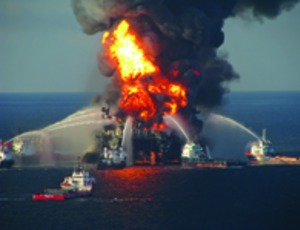
Released on Sept. 13, a final federal report on the cause of the explosion aboard the Deepwater Horizon oil platform did not immediately result in a rush to re-engineer wells, rigs or platforms, largely because new offshore regulations have been in development since the April 2010 blowout of BP's Macondo well in the Gulf of Mexico.
The report ties up more than a year of research and hearings into the well blowout that took 11 lives and resulted in a months-long oil spill and cleanup. The report, authored by the Coast Guard and the Bureau of Ocean, Energy, Management, Regulation and Enforcement, says BP was ultimately responsible for the accident. It also places blame on contractors Transocean and Halliburton. The report says the key cause of the blowout was the failure of a cement barrier in the production casing string, a high-strength steel pipe set in a well to ensure integrity and allow future production. It also suggests improvements for offshore drilling and operations.
Those recommendations are “generally in line with the work the joint industry task force is doing,” says Andy Radford, a senior policy adviser for the American Petroleum Institute. The report also suggests design changes for air-intake locations on diesel engines to eliminate gas-fume intake when a blowout occurs. Industry still could be hit with new or more severe regulations in the future, says Randall Luthi, president of the National Ocean Industries Association.
